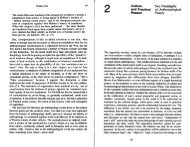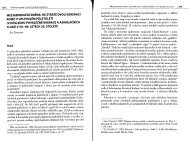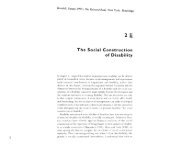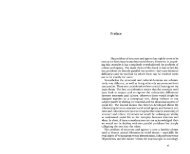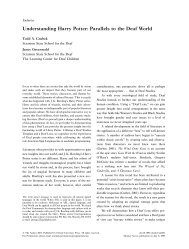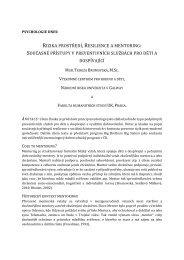Morphogenesis versus Structuration: On Combining ... - Moodle
Morphogenesis versus Structuration: On Combining ... - Moodle
Morphogenesis versus Structuration: On Combining ... - Moodle
Create successful ePaper yourself
Turn your PDF publications into a flip-book with our unique Google optimized e-Paper software.
<strong>Morphogenesis</strong> <strong>versus</strong> structuration 471<br />
T4 is thus the new T1, and the next cycle must be approached afresh<br />
analytically, conceptually and theoretically. Giddens is completely<br />
correct that laws in the social sciences are historical in character (i.e.<br />
mutable over time), but whereas his endorsement of this view rests<br />
principally on the reflexive knowledge and behaviour of actors,52<br />
mine resides on changes in the social structure itself which require us<br />
to theorize about it in different ways since our subject matter has<br />
altered. A new explanandum calls for a new explanans, though this<br />
does not rule out the possibility that the latter can be subsumed<br />
under a more general law.<br />
Paradoxically for all Giddens's stress upon the importance of time,<br />
it is the past in the present and the future in the present which matter<br />
for him; the present being a succession of 'passing moments' in which,<br />
quoting William James approvingly, 'the dying rearward of time and<br />
its dawning future forever mix their lights'.53 This continuous flow<br />
defies periodization. Consequently he has to stress the quintessential<br />
polyvalence of each 'moment', both replicatory and transformatory<br />
(reproduction always carries its two connotations). Yet he is nevertheless<br />
driven to recognize the existence of 'critical phases' in the long<br />
term and to accord (excessive) theoretical significance to them (as<br />
times of institutional spot-welding). What is lacking in Giddens's work<br />
is the length of time between the 'moment' and the 'critical phase'<br />
-in which the slow work of structural elaboration is accomplished<br />
and needs theorizing about.<br />
III SOCIAL SYSTEMS AND THE INDIVIDUAL/SOCIETY DICHOTOMY<br />
Giddens's basic aim here is to bring together the development of the<br />
individual as a social product and the generation of society by human<br />
agency, within a single theoretical framework. Essentially this means<br />
giving a 'parts-whole' account which explains the articulation of the<br />
two components. Giddens 's account accepts the 'problem of scope ': 54<br />
he rightly rejects homology as a solution, denying that the system is<br />
small scale interaction writ large, or that the small is a miniaturized<br />
version of the large. His distinction between social and systems<br />
integration widens this rejection to include any view which presumes<br />
that what integrates the individual into society automatically explains<br />
what integrates society itself-thus illegitimately conflating social<br />
integration with systemic integration. Such views foreclose the<br />
possibility of society consisting of groups in tension, yet he argues<br />
that those who have accepted such tension as their premise (like<br />
Merton) have then wrongly relinquished an understanding of the<br />
totality as in some way implicated in the parts.Ss It is this implicative<br />
'parts-whole' relationship that he seeks to develop. Already two<br />
controversial points should be noted.



